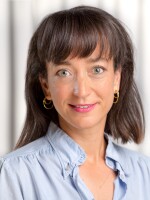#NPRreads is a weekly feature on Twitter and The Two-Way. The premise is simple: Correspondents, editors and producers from our newsroom share the pieces that have kept them reading, using the #NPRreads hashtag. Each weekend, we highlight some of the best stories.
From News Desk Editor Barbara Campbell:
This essay by Sarah Gailey is a hoot. It also feels true, delving into cartoon characters to ask why the women have to be villains to be bold, to seek power, to act now.
The princess model relies on being liked, Gailey says:
"We look at thin-wristed shy-smiling nice-haired female protagonists and we see what's expected of us: wait. Be patient. Be nice. Be happy with your lot, enjoy what you're given, and don't look for more. ... everyone must love you. ... Don't get old or fat or tall. Don't make demands. Hope, maybe, but never expect."
As Gailey notes, the villainesses aren't role models. But maybe real women can model for the cartoons: standing up to powerful harassers, rejecting limits, running for president.
From Political Reporter Sarah McCammon:
As I cover the Donald Trump campaign, I'm thinking a lot about the white working class voters who tend to overwhelmingly support Trump: the frustrations they feel with "the elites" and the sense that "the system" wasn't created for them. The author of this piece about "coding white trash" describes a similar sense about forging a career in academia, while also feeling out of place each time she returns to her blue-collar roots.
This discussion also appealed to me personally as someone who grew up in the Midwest, married a Southerner, and did not attend an elite college. I have experienced the feeling of insecurity that perhaps power centers like DC are really not meant for me. In my own family, people on one side tend to be farmers and a truck drivers and factory workers, while the other side includes a judge, neurosurgeon, and cardiologist. I've seen up close the gaps between their opportunity sets and how differently my cousins/aunts/uncles on either side live and think.
Take that disparity and disconnect and amplify it times millions of Americans, and it provides an insight into our current political upheaval. This piece is excellent context for understanding that.
From National Desk Associate Producer Laurel Wamsley:
I love granny flats, the small backyard dwellings also known as carriage houses, laneway houses, or garage apartments. I lived in one my senior year of college, and it was great: a tiny little house I shared with a roommate, tucked behind a larger single-family home on a residential street near campus in Chapel Hill.
As cities grapple with how to create more affordable housing, granny flats add capacity without significantly changing the existing look and feel of a neighborhood. These backyard homes create useful new housing types in neighborhoods that otherwise might be out of reach for low- or middle-income folks, while providing a new income stream for homeowners and adding density that can make it easier for local businesses to sprout.
But construction of granny flats is contentious in some cities, pitting neighbors who want to build them against others who say, in this case literally, "not in my backyard." As the Washington Post's Emily Badger points out in this report on the battle in Los Angeles, the shortage of affordable housing there is so acute (and the laws so contradictory) that as many as 50,000 such units already exist. Just look for curtains in the garage windows.
From Nina Gregory, a senior editor with NPR's Arts Desk:
This beautifully written story details the elegiac motions of some of those who lost family members five years ago in the tsunami in Japan. It has an otherworldly quality of sadness, devotion and loss while also being very well reported. The story takes us into the ocean with a father searching for his daughter in an act that is so poignant and meditative, as a reader, I, too, felt his grief. To commit such resources in order to tell the story of those who are still grieving five years later is a meaningful commitment from The New York Times and well worth the reader's time.
Copyright 2022 NPR. To see more, visit https://www.npr.org.








